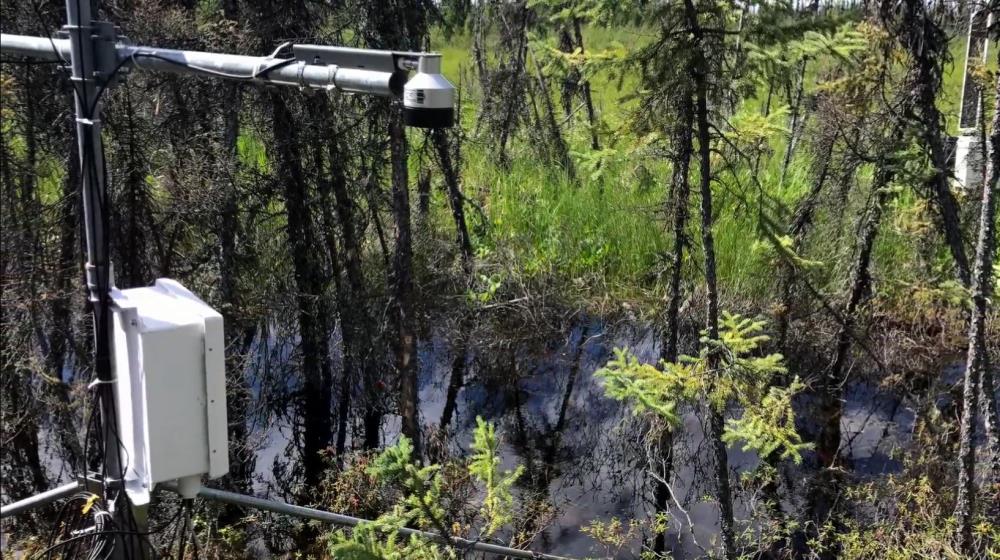
Related items loading ...
Section 1: Overview
Name of Research Project
|
Related Project
|
Part
|
|
GWF-TSTSW: Transformative Sensor Technologies and Smart Watersheds
|
|
|
|
|
|
|
|
|
|
|
|
|
|
Dataset Title
Meteorological and Hydrological Data from the Alder Creek Watershed, Grand River Basin, Ontario
Creators
|
Rudolph, David | PI | | | |
Wiebe, Andrew | Originator | | | |
Hillier, Cailin E | Collaborator | | | |
Menkveld, Paul G | Collaborator | | | |
Mesec, Emilie | Collaborator | | | |
Purpose
The main objective of this project was to instrument the Alder Creek watershed with sensors and telemetry in order to collect near real-time hydrological data for monitoring the impacts of urbanization and land use change within a critical area for municipal water supply. The goal of the Southern Ontario Water Consortium (SOWC) was to set up a platform for research, development, testing, and demonstration of new sensors, data processing technology, and services. Alder Creek was instrumented as one of several field observatories, and it represented the middle member of three subwatersheds along a continuum from rural/agricultural (Hopewell Creek) to fully urbanized (Mimico Creek, Toronto). Foci within the project included hydrological data collection and data management. Field data such as meteorological, stream, and groundwater observations were recorded. Near real-time transmission of these data, via cellular network telemetry to an Online data platform (IBM's Intelligent Operations for Water), for display and data analytics, was a complementary aim. Concerns regarding the vulnerability of municipal supply wells to microbial and non-point source contamination, especially under the conditions of extreme hydrological events, were drivers of this work.
Note that this project was started within the Watershed Node of the Southern Ontario Water Consortium (SOWC;
www.sowc.ca ) and funded by the Federal Economic Development Agency of Canada (FedDev) and the Ontario Ministry of Economic Development and Innovation (MEDI). This data set will also support the project titled "Transformative sensor Technologies and Smart Watersheds (TTWS): Work Package 1". TTWS is a Pillar 3 project under the Global Water Futures Program funded by Canada First Research Excellence Fund.
Abstract
The Alder Creek field observatory was instrumented by the Southern Ontario Water Consortium as the middle member of three watersheds with different degrees of urbanization. Field data were collected via the deployment of electronic instruments and manual measurements in the Alder Creek watershed to answer questions related to water management at the watershed scale. Field sites were chosen based on: 1) an attempt to distribute measurement locations spatially throughout the watershed, 2) permissions obtained from local residents, businesses, and stakeholders (e.g., the Regional Municipality of Waterloo) for installations, and 3) interest in monitoring local processes such as depression focused recharge. Cellular network telemetry was used to regularly transmit remote field data to a computer at the University of Waterloo. This was part of a “smart” watershed design whereby field data could be reviewed by technicians to make decisions regarding field monitoring and equipment maintenance. Data collection schedules could also be adjusted remotely.
Meteorological and hydrological (surface water and groundwater) data were collected within the Alder Creek watershed over about five years. Seven weather stations were deployed in and around the watershed that included instruments for the measurement of rainfall and snow depths, and for recording parameters required to estimate reference evapotranspiration (air temperature, relative humidity, incoming solar radiation, and wind speed). Several single and multi-port wells were installed near the weather stations. Recharge stations were set up at two sites to monitor soil moisture changes and water table fluctuations over time. Each consisted of a network of shallow wells/piezometers and infrastructure for measuring soil moisture both electronically and manually. One of these stations was designed to assess groundwater-surface water interaction and depression focused recharge during extreme/large-magnitude hydrological events. Stream monitoring at different points along the creek included: manual water sampling; testing of automated water sampling using event triggers; measurement of water levels and temperatures; measurement of pH, temperature, dissolved oxygen, electrical conductivity; development of streamflow rating curves; and automated nitrate concentration monitoring. Snow and water samples were analyzed for major cation and ion concentrations, and for O-18 and H-2 isotopes.
Keywords
|
Air temperature |
Alder Creek Watershed, Grand River Basin, Ontario, Canada - FACEV |
Citations
Wiebe, A. J., Menkveld, P. G., Hillier, C. E., Mesec, E., & Rudolph, D. L. (2019). Meteorological and hydrological data from the Alder Creek Watershed, Grand River Basin, Ontario. Waterloo, Canada: Canadian Cryospheric Information Network (CCIN). (
https://dx.doi.org/10.20383/101.0178 )
Section 4: File Locations
Repository (e.g., FRDR, Dataverse, GitHub)
Current File Locations
Section 5: Download Links
Download Links and/or Instructions
Do these data have access restrictions


 GWFNet
GWFNet Master
Master Data
Data Research
Research Map
Map
 Advanced
Advanced Tools
Tools
 . . .
. . .
 Metadata Editor
Metadata Editor
 Record List
Record List
 Alias List Editor
Alias List Editor
 Legacy sites
Legacy sites